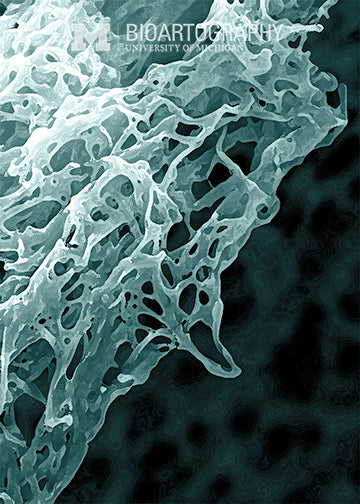

Seth Woodbury, Undergraduate Student (Mishina Laboratory), Department of Biologic and Materials Science, University of Michigan School of Dentistry
Regenerative medicine is an important and rapidly evolving field. While some of our bodily tissues can repair themselves after injury (e.g., skin, gut), many cannot. However, help can come from a combination of stem (or progenitor) cells and bioengineered scaffolds. The scaffolds serve as a temporary template for the body’s repair cells to migrate into, grow, divide, and eventually replace the scaffold as they regenerate the tissue. Scaffolds are made from special polymers that facilitate cell growth and division; they can be natural (e.g., collagen) or synthetic. The scaffold in this image is made of a synthetic biomaterial that has a unique ability to crystallize into nanometer-sized fibers (nanofibers) during the fabrication process. Stem and progenitor cells thrive on nanofibers because they can adhere to them very well. Thus, these scaffolds facilitate tissue regeneration and repair in damaged tissues that cannot naturally heal on their own.
23-044
